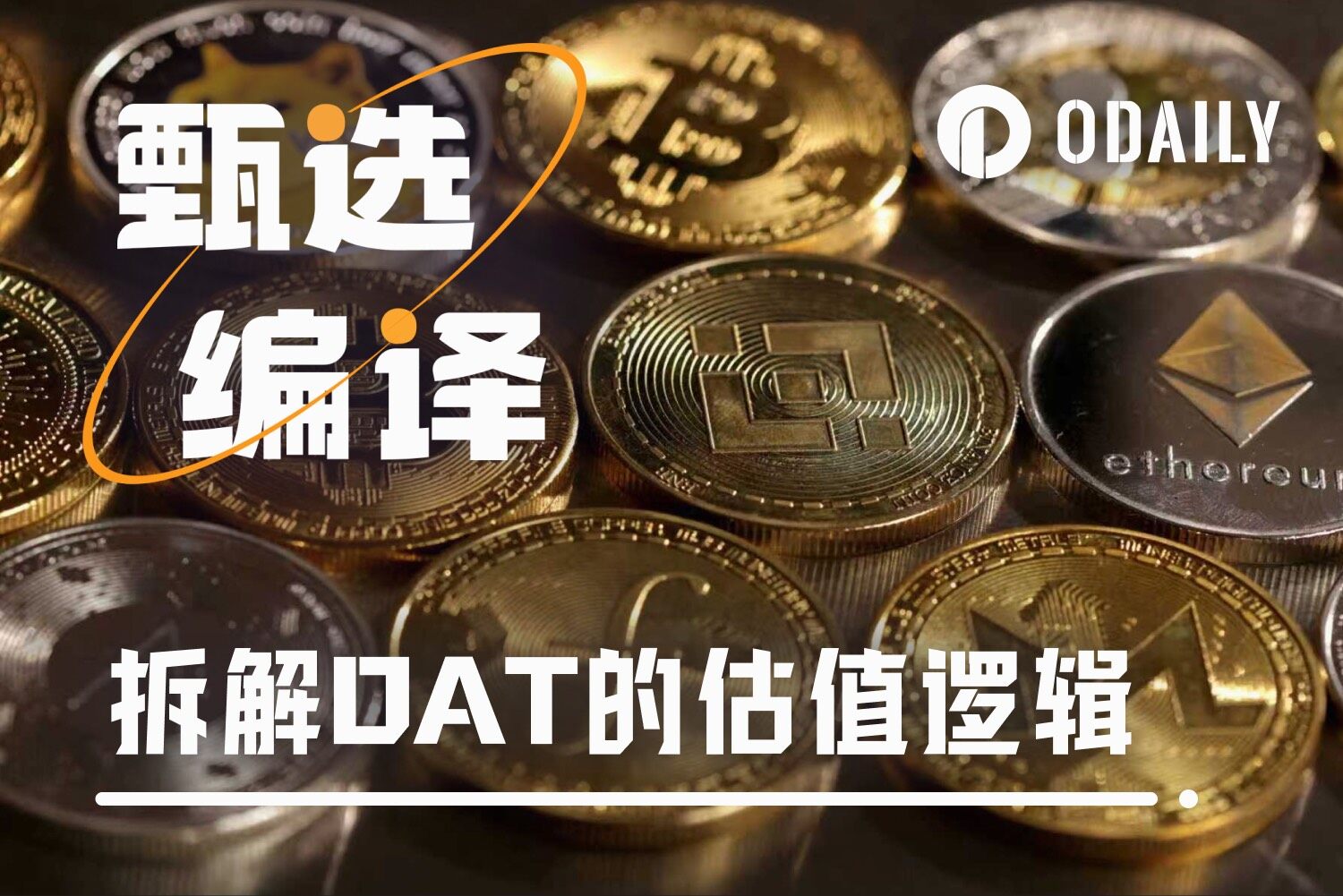_This article is from: _Bitwise Chief Investment Officer Matt Hougan
Translation|Odaily Planet Daily (@OdailyChina); Translator|Azuma (@azumaeth)_
Editor’s Note: As the overall market declines, the market value of Digital Asset Trusts (DATs) has also been collectively hit hard. Leading ETH DATs like BitMine and SharpLink have seen their mNAV (a measure of the ratio of DAT trading value to cryptocurrency holding value) fall below 1, and the premium of the leading BTC DAT, Strategy, has narrowed to 1.14 due to recent index delisting pressures.
In the midst of panic, discussions about whether the DAT model has been disproven and how it should be valued are increasing. In the early hours of November 24, Bitwise Chief Investment Officer Matt Hougan provided his insights on this matter on X.
The following is the original content from Matt Hougan, translated by Odaily Planet Daily.

Recently, I have seen a lot of poor analysis regarding Digital Asset Trusts (DATs). Specifically, many people misunderstand whether they should trade at a value above, below, or equal to their asset holdings (the so-called "mNAV").
When assessing the value of a DAT, you should first ask yourself: If this company had a fixed lifespan, how much would it be worth?
The value of this approach becomes clear when viewed from a very short-term perspective. For example, suppose a Bitcoin DAT announces it will close this afternoon and distribute its held Bitcoin to investors; its trading price would be equal to its Bitcoin value (mNAV of 1.0).
Now, let's extend this time frame. What if it announces it will close in a year? Now you must consider all the possible reasons that could cause the DAT's trading price to be above or below its Bitcoin value. Let's analyze them one by one.
The three main reasons for a DAT to trade at a discount are — lack of liquidity, operating expenses, and potential risks.
- Lack of liquidity: You certainly wouldn’t want to buy Bitcoin that you can only receive in a year at the current price, but you might be willing to accept a discount, say 5% or 10% — personally, I would accept a 10% discount — which would correspondingly lower the value of the DAT.
- Operating expenses: Every dollar spent on operating expenses or executive salaries comes from your pocket. Suppose this DAT, which will liquidate in 12 months, holds $100 worth of Bitcoin per share but needs to pay executives $10 per share annually; you would certainly demand a 10% discount relative to the net asset value.
- Potential risks: There is always a risk of mismanagement within the company. This also needs to be factored into the price.
Now let’s look at the reasons a DAT might trade at a premium. In the U.S., there is only one reason — it can continuously increase the amount of cryptocurrency held per share. From my observation, DATs can achieve this goal primarily through four methods.
- The first is issuing bonds: If bonds are issued in dollars and used to purchase cryptocurrency, when the cryptocurrency appreciates against the dollar, you can pay off the debt while increasing the amount of crypto assets held per share. This is roughly how Strategy increases its BTC holdings per share. Of course, if the price of Bitcoin falls, the opposite may occur.
- The second is lending cryptocurrency: By lending out cryptocurrency to earn interest, thereby increasing the amount of cryptocurrency held per share.
- The third is using derivatives: Engaging in operations such as selling call options while holding cryptocurrency can generate income and acquire more assets. Of course, this also sacrifices some upside potential.
- The fourth is acquiring cryptocurrency at a discount: DATs may acquire cryptocurrency at a discount through various means:
- Purchasing locked assets from foundations that wish to sell specific assets without disrupting the market;
- Acquiring other DATs that are trading at a discount;
- Repurchasing shares when their own stock is trading at a discount;
- Acquiring cash-flow-generating businesses and using that cash flow to purchase cryptocurrency.
A major challenge facing DATs is — the reasons for them to trade at a discount are certain, while the reasons they might trade at a premium are uncertain.
Thus, the threshold for DATs will be high, most companies will trade at a discount, and only a very few outstanding companies will trade at a premium.
Returning to the earlier example, if there is a Bitcoin DAT that will liquidate in 12 months, you can now:
- Calculate its operating expenses;
- Add the risk discount;
- Offset these discounts based on its ability to increase the amount of Bitcoin held per share;
- The result is its fair value.
You might say, “But DATs do not have a fixed lifespan; they will exist forever!”
This indeed complicates the analysis, but essentially means that all factors will be magnified. Expenses and risks will compound over time and need to be closely monitored; similarly, DATs that can continuously increase the amount of cryptocurrency held per share may be extremely valuable.
In outlining the methods by which DATs can increase the amount of cryptocurrency held per share, I noticed that economies of scale are crucial in all aspects.
Large DATs find it easier to issue bonds than small DATs. They have more cryptocurrency available for lending; can access a more liquid options market; and have advantages in mergers and other discounted transactions.
Over the past six months, DATs have moved in tandem. Looking ahead, I believe the divergence will intensify — a few companies will perform excellently and achieve premium trading, while most will perform poorly and continue to trade at a discount.
Further Reading
Turning Point for DATs? These 12 Trust Companies Represent mNAV Falling Below 1
Facing Index Delisting? Strategy is Deep in a "Fourfold Strangulation" Crisis
免责声明:本文章仅代表作者个人观点,不代表本平台的立场和观点。本文章仅供信息分享,不构成对任何人的任何投资建议。用户与作者之间的任何争议,与本平台无关。如网页中刊载的文章或图片涉及侵权,请提供相关的权利证明和身份证明发送邮件到support@aicoin.com,本平台相关工作人员将会进行核查。


